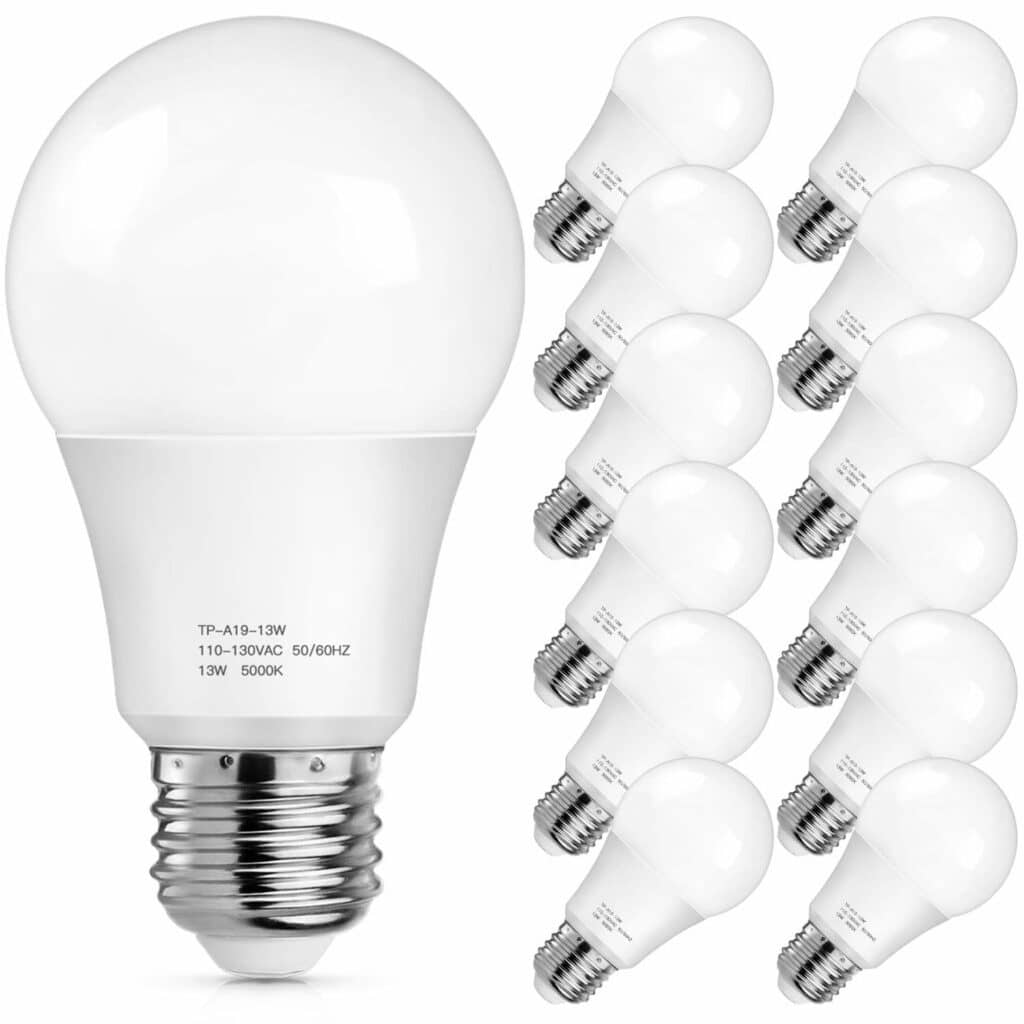When you visit the hardware of the light bulb segment, there are multiple bulbs in various sizes and designs. The most famous bulbs you’ll come across are the dual models-A19 and A21. At first glance, you may think they are similar.
What is the variance between A19 and A21? Can they be alternated? Which is the best option for you? To answer all of these questions, join us as we share comprehensive questions with you.
What is an A-Type Light Bulb?
“A” type light bulbs are not new in the market space. They’ve made their mark in most homes and businesses for over a century. Letter “A” refers to the bulb’s pear shape with an E (Edison) base. The immediate number after the letter signifies the bulb’s width in eighths of an inch, such as A19 and A21.
The “A” light bulb models can be LED, incandescent, or CFL.
To get the bulb’s diameter, you divide the number by 8. The popularity of the A- type of bulbs has been rising thanks to their durability and energy efficiency.
Despite several “A” bulbs in the market, the most common ones are A19 and A21 because they provide the finest blend of glare and versatility. They’re neither too small to light most areas entirely nor are they bigger to fit securely into many light fixtures.
A19 Bulb vs A21: What is the Difference?
To compare both bulbs, you must consider their shape and dimension. They may seem similar, but the two have minimal differences, the primary difference being their size.
Below is the breakdown in categories to help you make an informative decision.
- Name Meaning
A quick recap, A19 vs. A21 refers to the bulb’s size. “A” is the common light bulb’s pear shape for home use and employs an E- Edison base. The number represents the bulb’s size in diameter. Meaning both products share the shape but vary in size.
- Size/ Dimension
The bulb’s dimension is crucial to ensure it fits well with the lighting fixture. All “A” light bulbs have a particular size/ criteria for measuring them. You only need to take the bulb’s width and divide it by 8. For instance, A19 has a standard height of 4.13 inches; thus, its diameter is 2.375 inches (19/8). The A21 bulb has a standard height of 5-inches with a diameter being 2.625 inches (21/8)
The size of the bulb governs the amount of heat it releases. The more heat it releases, the higher lumens it offers. Thus, the A21 bulb operates better in heat dissipation and supply.
- Lifespan
Both A19 and A21 last longer. You can enjoy roughly 20,000 and 30,000 hours from a single battery.
- Bases
The base of the bulb is equally an important factor to consider. It helps you establish how you will fix the bulb into the fixture, whether it is to be screwed or otherwise. Both A19 and A21 bulbs have an E26 light base meaning they can be attached to most common light fixture sockets.
- Holders
The fact that they have the same base doesn’t necessarily mean they’re interchangeable, regardless of being true to some extent. The bulb base’s size defines how it fits into the light fixture.
Conversely, the bulb’s width defines if the bulb can suit the lamp head. Therefore, an A19 bulb can fit into an A21 lamp holder but not vice versa because:
A19 lamp fixtures are not structured to accommodate larger light bulbs due to space restrictions.
A21 disperse more heat due to their higher wattage, and since they’re closer to the lampshade, it increases fire risks.
Overall, A19 won’t blend well with A21’s higher wattage. Hence, choose the correct bulb according to your lampshade dimensions.
- Uses
There are multiple elements to consider, including room type and size, light dissemination, electricity budget, etc. Both bulbs provide an omnidirectional light for any size variation room.
Various room types demand varying illumination levels. So, it would be best to establish your room type to prevent having too dim or too much glare. For instance, kitchens should be more illuminating than bedrooms.
A21 consists of advanced lumen level and releases robust lights that 100W incandescent bulbs emit but with a downside of high energy costs. Therefore if you don’t need too much light, A19 is a perfect choice as it is inexpensive and energy efficient.
Apart from the size discrepancy between the two bulbs, their application also differs. A21 has a greater surface area, ideal for bigger rooms and ceiling lamp fixtures. Contrary, A19 is suitable for floor or table lamps.
- Watts and Lumen
Both bulbs come in the equivalent of 40W, 60W, and 100W, which emit 450, 800, and 600 lumens individually.
What Are The Pros And Cons Of A19 and A21?
| A19 Light Bulb | A21 Light Bulb |
Pros
| Pros
|
Cons
| Cons
|
A19 vs A21 Light Bulb – Which One to Buy?
Being an interested buyer, you may not realize the importance of the variation between the two bulbs. But it is necessary to know the benefits of each to make an informative decision. Despite the difference between the two dimensions, the overall measurement of the bulb does affect the power and energy consumption.
There is nothing much to say in terms of design, and it is not the subject of which one to purchase. Instead, what is more, paramount is the use. A19 light bulbs are perfect for floor lamps and smaller tables that are difficult to replace the light bulb. A21 light bulbs emit an excellent quantity of bright light and are thus ideal for ceiling fittings.


